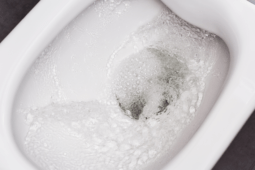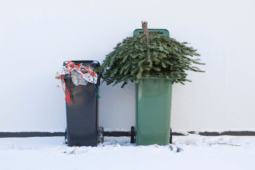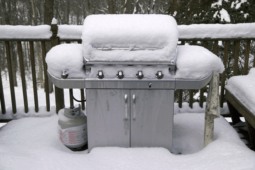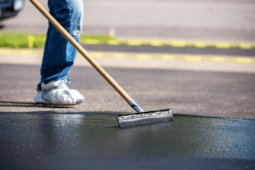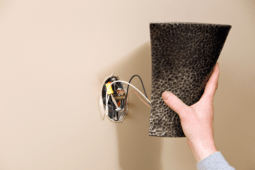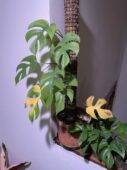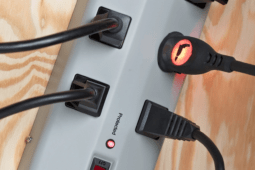The Best Small and Dwarf Trees For Landscaping
Landscaping a yard can be a tricky endeavor depending on what kind of space you have to work with. A tree is not only great for shade but can add brightness to any property. The issue is having the space to accommodate a tree, as there are a plethora of trees out there that can reach 50 to 100 feet or more.
Thankfully, there are small and dwarf trees that are perfect for landscaping. Each offers it’s own unique aesthetic and benefits, too. With so many out there, it helps to know which are the best for smaller landscapes. There are Japanese maple and cedar, dwarf chestnut oak, Franklin trees, redbuds, hydrangeas, hedge maple, hawthorn, and so many more. It is important to know the growing habits and size of each as they may not be suitable for your region.
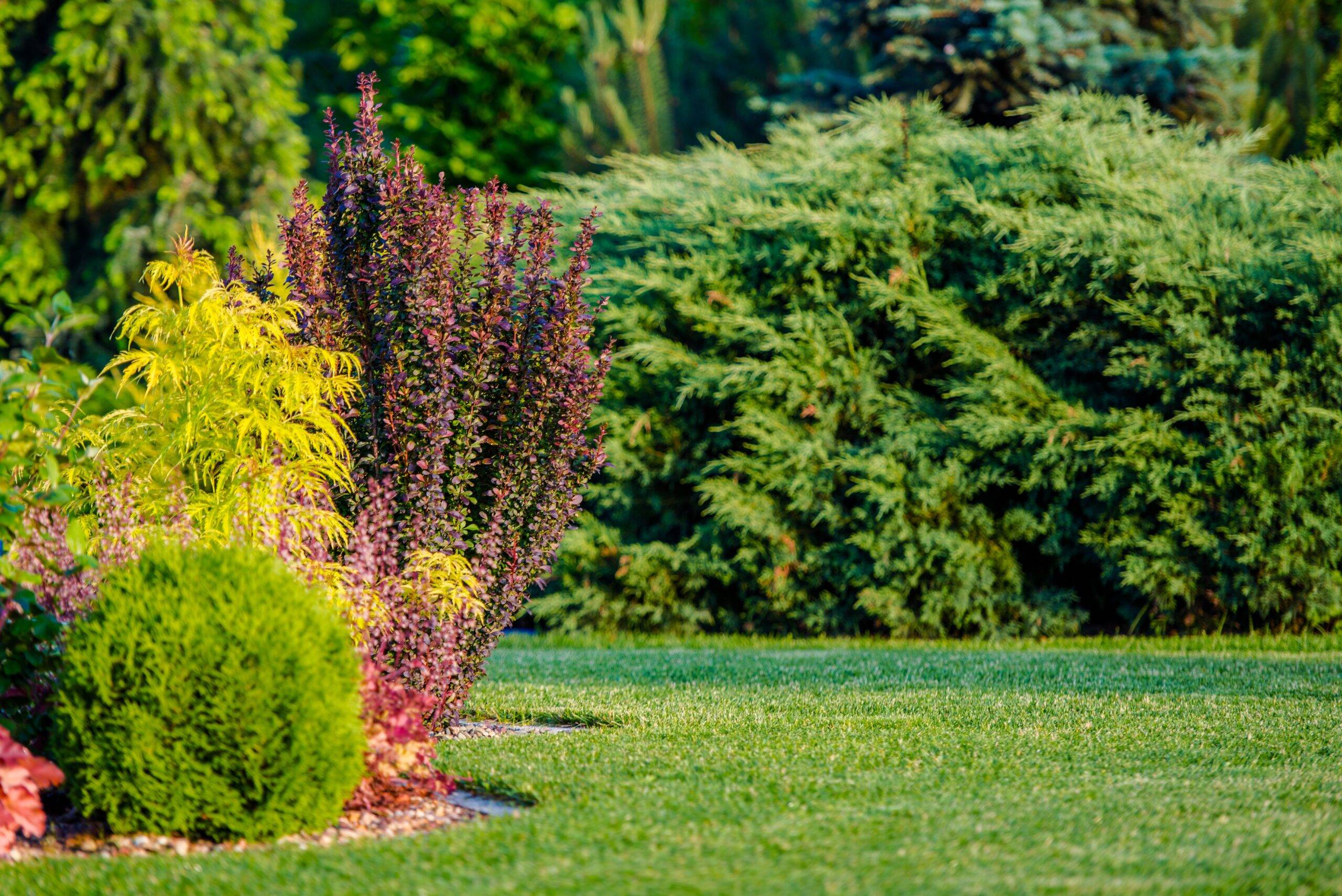
1.) Jelly King Crab Apple
There are more than a few dwarf trees out there that are ornamental in nature. That means that they add to the overall visual of your landscaping. These trees also produces vibrantly red apples that are completely edible as well.
The jelly king crab apple can get to be up to 13 feet in height with huge, stunning white blossoms that typically bloom in the spring. Even better, they require minimal pruning, meaning you don’t have to pay them much mind after planting.
USDA Growing Zones: 4 to 10
Sun Exposure: Part shade to full sun
Soil Needs: Well-drained, rich, slightly acidic
Color Varieties: Nonflowering
2.) Japanese Maple
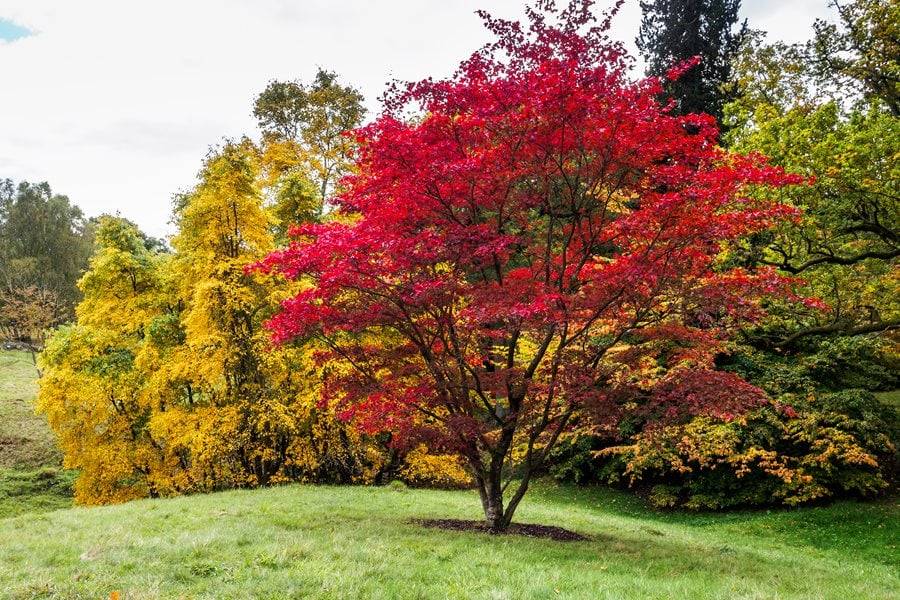
Also known as “lemon-lime lace,” this is a compact, colorful Japanese maple cultivar. When the leaves emerge, they are a lemon-yellow color. During the summer, they turn more chartreuse before ending up with a more bright orange hue when the fall months come. Finally, they drop off entirely during the winter months.
A great option for small yards because they only reach 6 to 12 feet in height with a spread in the 4 to 5-foot range. You don’t generally need to prune the Japanese maple, but if you want to do shaping, it should be done in the late fall before the foliage drops off.
USDA Growing Zones: 5 to 8
Sun Exposure: Part shade to full sun
Soil Needs: Slightly acidic, moist, well-drained, rich
Color Varieties: Insignificant
3) Crape Myrtle

Growing to be just 5 to 8 feet at maturity, this is a beautiful dwarf tree that can fit in even the smallest of yards. They can get as tall as 10 feet but that is pretty rare. What really makes them stand out are the purple, punk, or white flower that blooms.
This type of tree prefers hotter, humid regions. Still, make sure that they are provided with well-drained soil so as to not oversaturate them.
USDA Growing Zones: 6 to 10
Sun Exposure: Full sun
Soil Needs: Well-drained, moist, slightly acidic
Color Varieties: White
4) Japanese Cedar
The Cryptomeria japonica plants can grow as high as 60 feet, which is why it is great that there is a dwarf cultivar that is just right. This plant grows only 3 feet high and has a sort of pyramid shape to it. Because of its relatively small size, it can fit in just about any space.
With blue-green foliage, it does tend to develop a more bronze-reddish color during the winter months. Just make sure that the soil doesn’t dry out and keep it in a place that will be protected against the harsher winter winds.
USDA Growing Zones: 5 to 9
Sun Exposure: Full sun
Soil Needs: Rich, moist, well-drained, acidic
Color Varieties: Nonflowering
5) Wintersweet
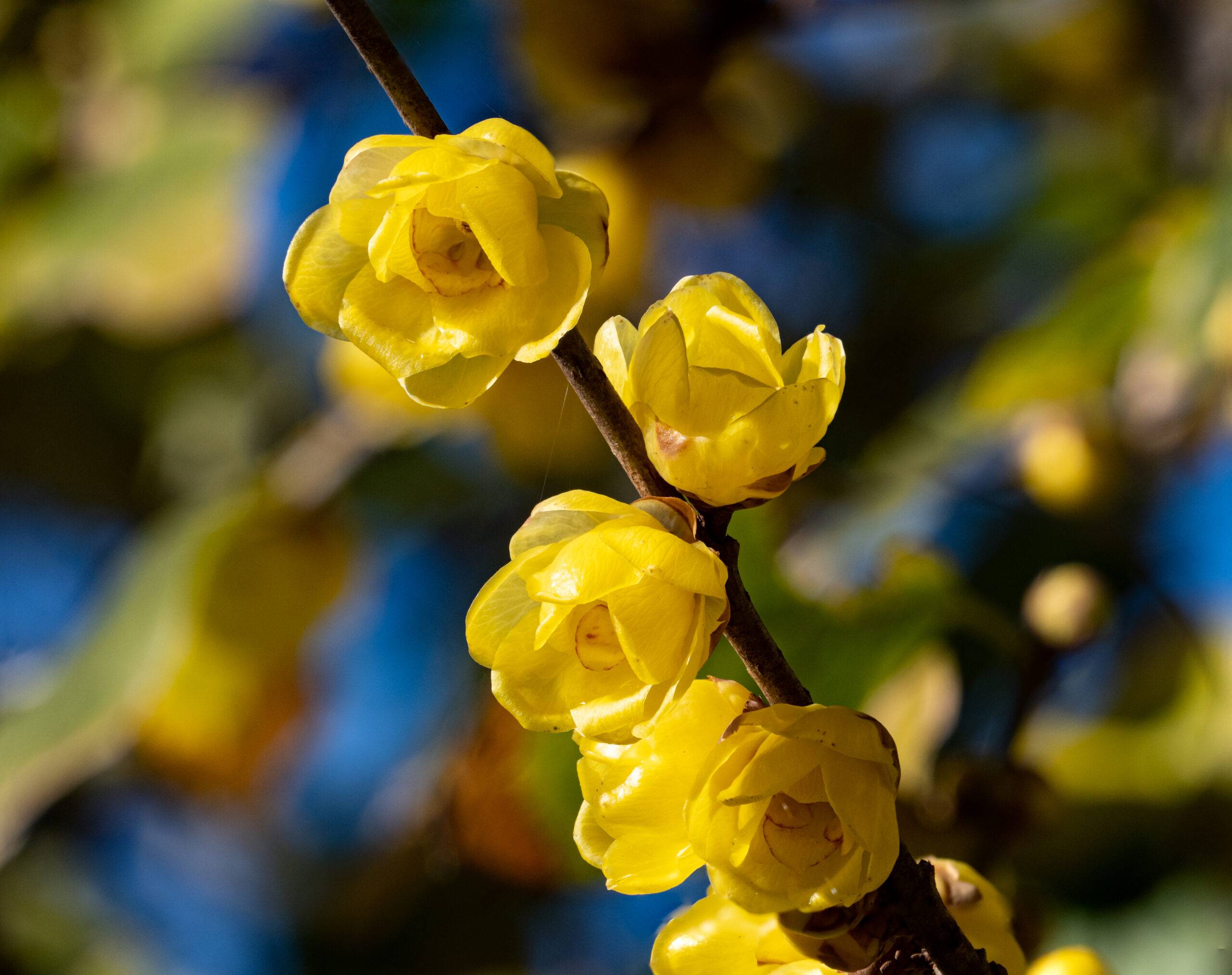
You can basically consider Wintersweet as a shrub since it is grown that way but it can be trained quite easily to be a small tree as well. When it is mature, it can be anywhere from 8 to 12 feet wide and 10 to 15 feet tall.
The signature of the wintersweet is its yellow blooms that come in over the winter. They are very fragrant, making them a perfect fit for patio or deck spaces. Just make sure that you keep it in moist soil without allowing it to become soggy.
USDA Growing Zones: 7 to 9
Sun Exposure: Full sun ranging to part shade
Soil Needs: Rich, moist, well-drained
Color Varieties: Yellow featuring purple-brown centers
6) Sargent Crabapple
The sargent crabapple is another that is absolutely perfect for smaller spaces. At its full maturity, it tops out around the 7- to 9-foot market. The single trunk results in largely upright branches that produce pink and white blooms that come to fruition in the springtime.
In the fall, those white and pink blooms turn to vibrant dark red fruits that butterflies and birds love to eat. It is one of the lower trees out there and you can find them in pink princess, firebird, and Tina variations.
USDA Growing Zones: 5 to 9
Sun Exposure: Full sun
Soil Needs: Moist, well-drained, alkaline to acidic
Color Varieties: Nonflowering
7) Hawthorn
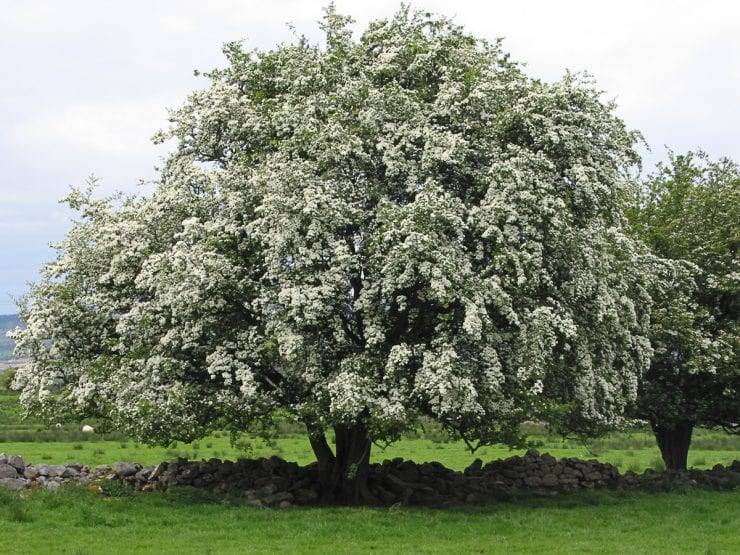
If you like a shrub or dwarf tree that offers bright, vibrant berries, the Hawthorn is a great option. It attracts birds as well, which is great for those who like to birdwatch. The flowers bloom both in the winter and fall, making for a great year-round visual.
Just be aware that the Hawthorn struggles with diseases like leaf spots and leaf blights. Spray a little neem oil and it should help to reduce your chances of infection.
USDA Growing Zones: 5 to 9
Sun Exposure: Full sun
Soil Needs: Well-drained, medium moisture, acidic
Color Varieties: Nonflowering
8) Harlequin Glorybower
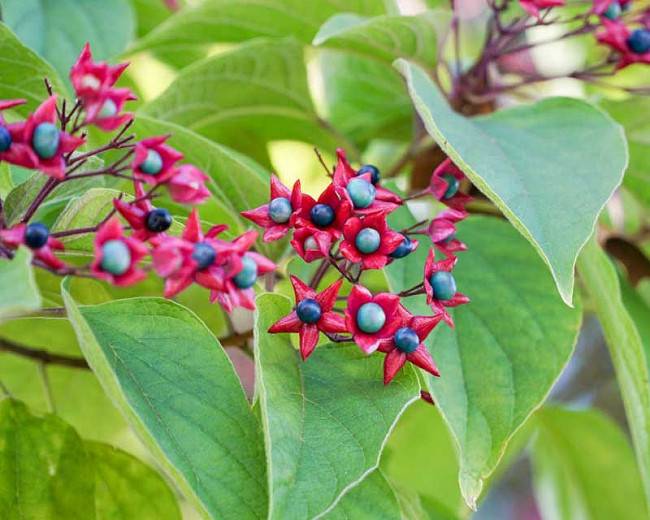
Though the name is definitely one that stands out, it doesn’t compare to the way that the plant itself stands out. Best of all, you don’t need all that much room considering it reaches 10 to 20 feet in height at full maturity.
The harlequin glorybower has very shiny summer flowers that feature purple pearlescent fruits. There is also a unique trait as it smells kind of like peanut butter when the foliage is bruised. It will take a few season and some pruning to really get the tree into form.
USDA Growing Zones: 7 to 10
Sun Exposure: Part shade to full sun
Soil Needs: well-drained, rich
Color Varieties: White

